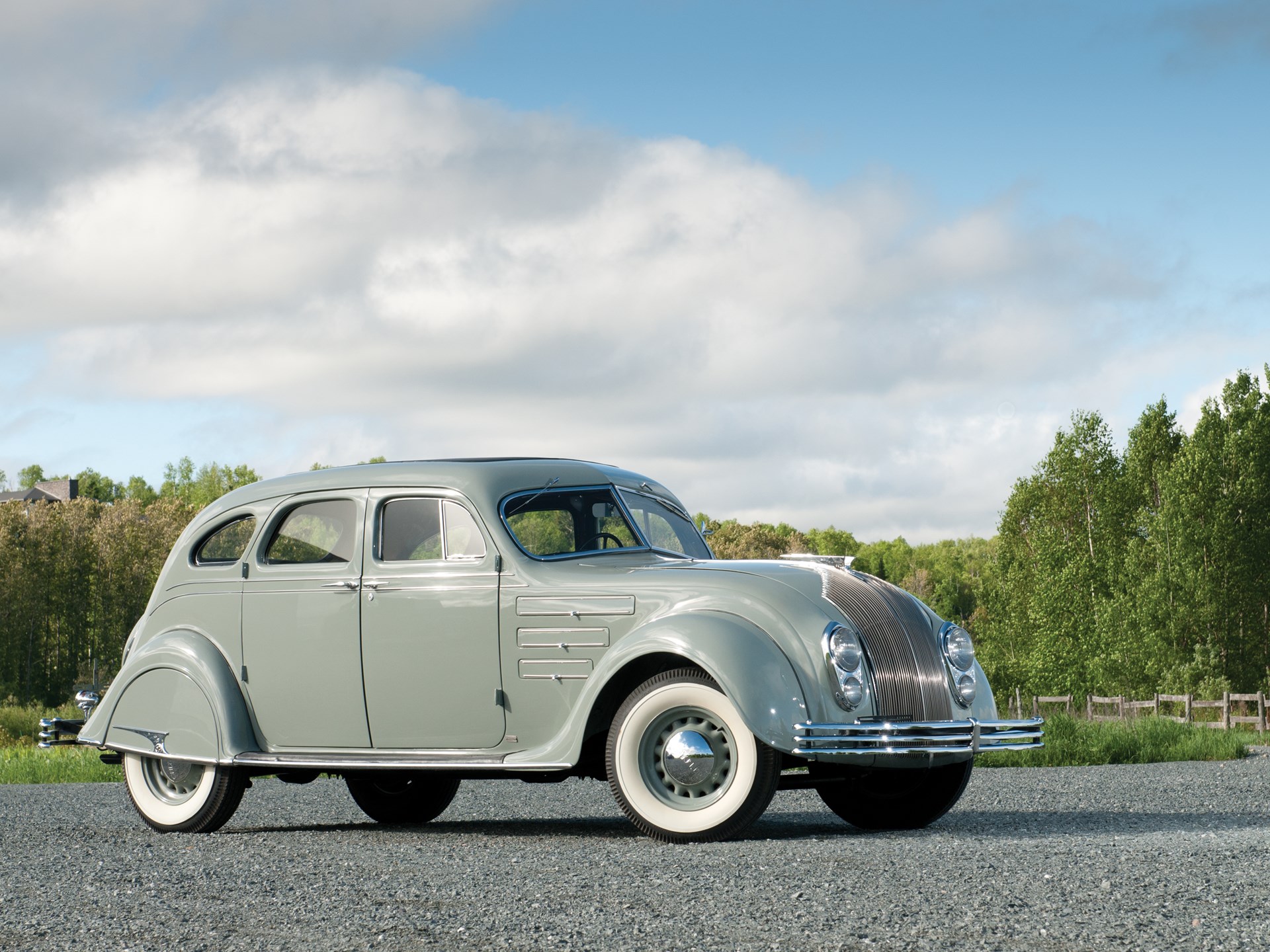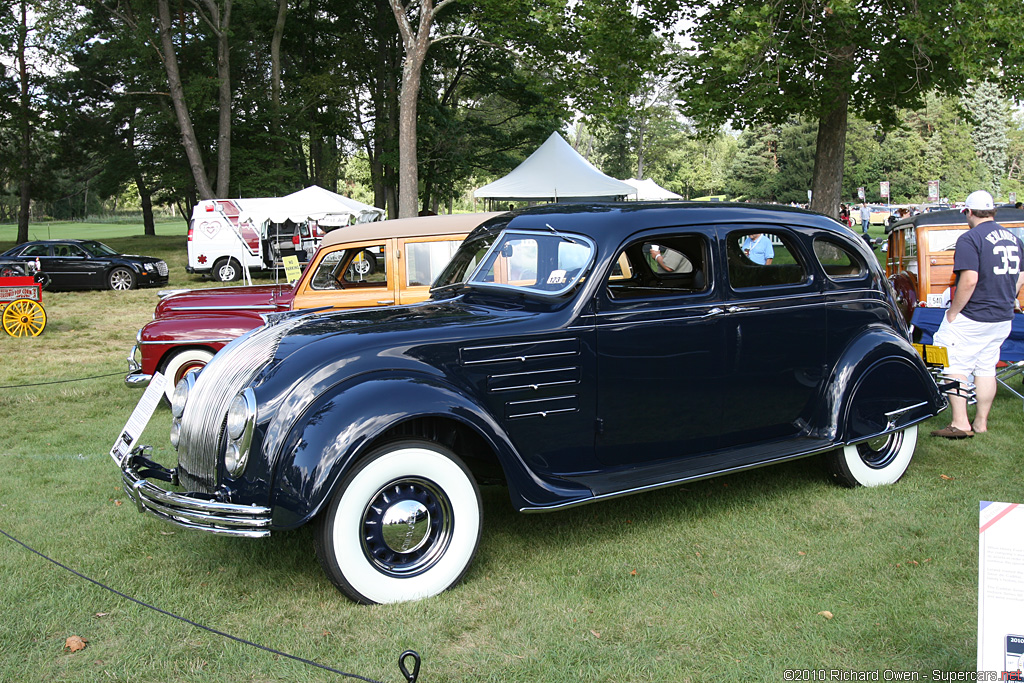
#1934 chrysler airflow full#
The passenger compartment used a full steel body instead of the usual timber structural framing members, the benefits of this design providing far greater rigidity, and allowing a much wider front seat (50 inches across) than comparative cars, while the rear seat too could be made much deeper. The weight distribution had approximately 54% of the weight over the front wheels, which evened to near 50-50 with passengers, and resulted in more equal spring rates, better handling, a far superior ride quality, and more interior space. To better address the Airflow’s handling dynamics, the Chrysler designers moved the engine forward over the front wheels, and passengers too were all moved forward so that they were seated within the wheelbase, rather than on top of the rear axle. Why the preamble about streamlined locomotives at the start of the article?Īt Unique Cars and Parts, we think the more likely reason for adopting theĪirflow design was based on this, and not the flock of geese. This may have made them unsafe on slippery roads, however braking systems still relied heavily on retardation via the rear wheels, so the uneven weight distribution’s biggest impact was on handling, and the resultant harsh ride incurred by fitting stiffer springs to the rear axle. When loaded with passengers, the weight distribution tended to become further imbalanced, rising to 75% or more over the rear wheels. Traditional cars of the day were the typical two-box design, with about 65% of the weight over the rear wheels. Applying what they had learned about shape, the engineers also began looking into ways that a car could be built, such as the use of a monocoque body to help ensure structural rigidity while reducing overall drag, thus increasing the power-to-drag ratio as the lighter, more streamlined body allowed air to flow around it instead of being caught through upright forms, such as radiator grilles, headlights and windshields. Their engineers found that then-current two-box automobile design was so aerodynamically inefficient, that it was actually more efficient turned around backwards. A wind tunnel was constructed at Chrysler’s Highland Park facility, where over 50 scale models were tested by April 1930.
#1934 chrysler airflow series#
Another claim is that the inspiration came from watching aircraft, some say of the motorized military type, while others claim it to be from airships, which were popular up until the Hindenburg disaster of 1937.īreer, along with fellow Chrysler engineers Fred Zeder and Owen Skelton, began a series of wind tunnel tests, with the cooperation of Orville Wright, to study which forms were the most efficient shape created by nature that could suit an automobile.

One such theory is that he once watched a gaggle of geese travel through the air in a “V” flight pattern. The Airflow was inspired by designer Carl Breer, and there are many theories that remain to this day as to how Breer came up with the idea. Their creation was the Chrysler “Airflow” (and cheaper DeSoto Airflow), a car that boasted a plethora of new ideas and innovation, even though it is best remembered today for its streamlined design. On the other side of the Atlantic, Walter P Chrysler and Chrysler Corporation struck upon a similar concept, albeit in the automotive field rather than locomotive. To obtain faster speeds the great steam engines became bigger, but it was the “ streamlining” steelwork that was to capture the imagination, designers finally acknowledging that it was not only their job to make the locomotives go fast, but to look fast too. The LNER’s “Flying Scotsman” won international acclaim, however both railway companies knew that, in the battle for prestige, having the fastest locomotive would result in increased patronage.

Competition between the LNER and LMS was mainly in terms of the premium London to Scotland traffic.

In one corner was the London and North Eastern Rail Company (LNER), the other the London, Midland and Scottish Railway (LMS). In the early 1930’s the dark clouds of National Socialism were gathering over Germany, while in Britain the battle between two great railways was capturing the imagination of anyone with even a passing interest in things mechanical. The 1930’s was a time of upheaval, the great depression creating unprecedented hardship for many throughout the world, and political un-rest seemingly becoming the norm.


 0 kommentar(er)
0 kommentar(er)
